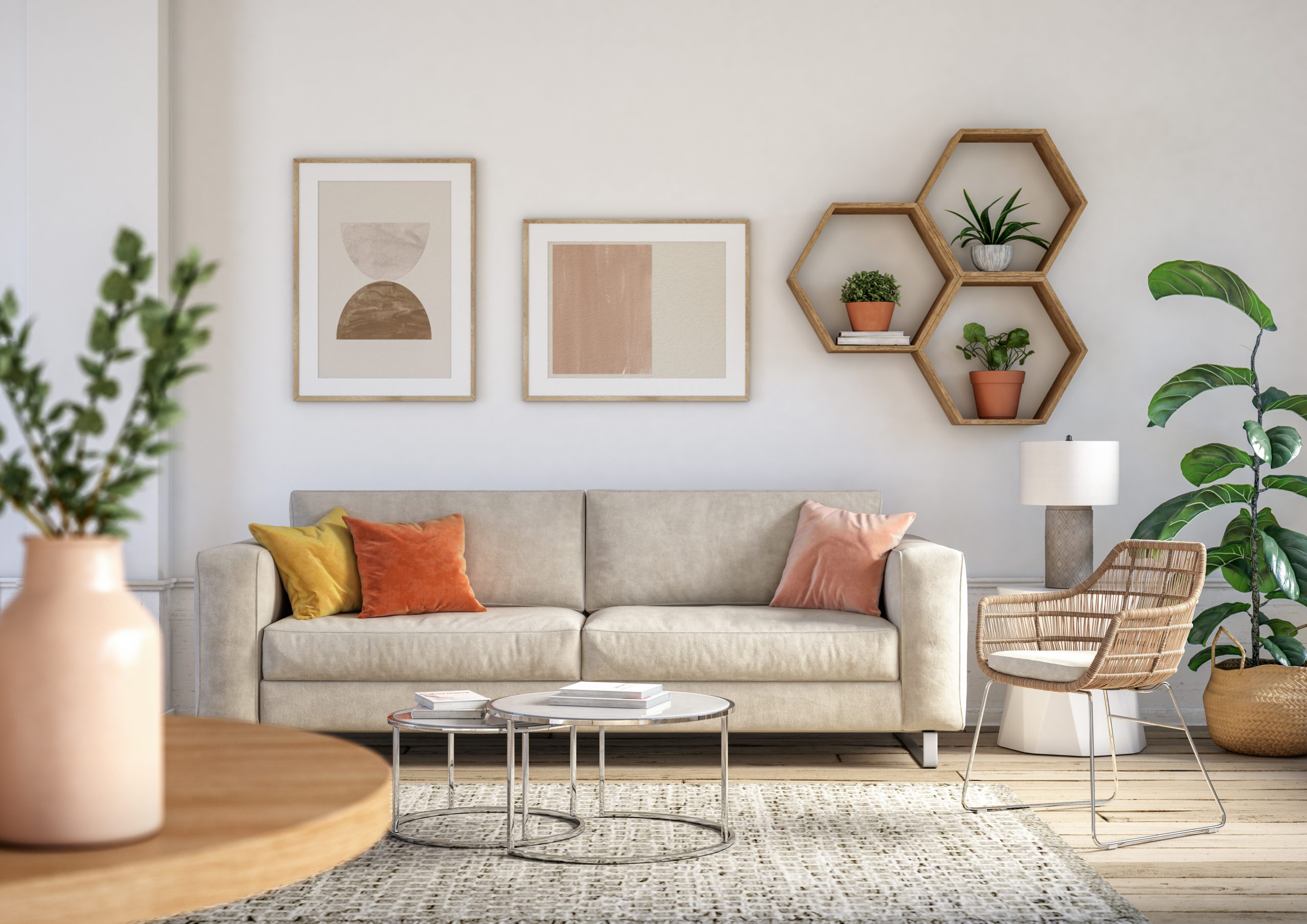
One of the great pleasures of buying a new property or renovating an old one is to be able to tap into your imagination and creative spirit to decorate and furnish your dream.
If you follow the basic rules of interior design, then you will be more than delighted with your final result. Some of us though are not artistically gifted, have inherited furniture or can be sidetracked by the latest wide screen TV special offer which leaves the final impact of your new home not what you expected.
Challenges often occur in the living area, where the flow of the room doesn’t seem to match what you experienced during your viewing with your agent just a few weeks earlier or as you designed the plans.
To avoid this situation, here are some hints and tips for how you can approach the furnishing and decoration of any living area.
- Sofa sensation – In the main living area, the couch is critical. It must be neither too small nor large for the room; otherwise, you’re never going to get the flow and atmosphere right. If you’re going to buy a new sofa, draft a plan of how you’ll place furniture in the room so that you get the size of couch you need. Masking tape on the floor of the ideal shape and width can help you visualise.
- It’s not a showroom – It’s essential you, your family and friends find your living area welcoming and comfortable. Trying to copy the layout of a showroom set-up will rarely be a practical or enjoyable in real life. Design the room to suit your lifestyle, not to sell furniture.
- Rug Up – It was The Dude (Jeff Bridges) in The Big Lebowski who said it best: A rug pulls the room together. Like the couch, you want a rug that’s the perfect size for the room. Too often, homeowners are cautious and end up with something too small. Measure the space to avoid disappointment. Masking tape works well here too.
- Caffeine hit – The style and size of your coffee table is another important decision. There’s nothing more annoying than continually cracking your shins against a large, heavy wooden table that is too big for the space. In small areas, you may want to look at all-glass alternatives to enhance the sense of light and space. In larger living areas, you should consider a table that offers storage.
- No wallflowers – Unless the living area is small, avoid lining your furniture against the walls and then placing a rug and coffee table in the middle. Bring your furniture away from the walls and create a more exciting design.
- It’s all talk – Too often, furniture is aimed towards the television. That’s a fair idea until you have visitors and you want to have a conversation. So, try to find the right balance.
- Hang-ups – Carefully consider how you will hang your artwork. Its subject, size and position will have a fundamental impact on the room’s appeal. So long as your ceilings are not too low, the place for artwork is at eye level.
- It’s curtains – A great tip to make your room feel bigger is to hang your curtains from the wall above the window, rather than on the window frame. This will increase the sense of height.
- Light it up – Avoid harsh lighting. While overhead lighting is essential, make sure it has a dimmer switch. Lamps around the room will offer softer lighting options.
- Mix and match – Don’t feel trapped in a particular style. It’s perfectly acceptable to mix up your furniture styles so long as you don’t overdo it. Artisanal rugs and authentic ornaments from exotic locations all have their place in a modern home especially if the colour scheme of your couch and furnishings are neutral.
- Fabulous fabrics – Neutral backdrops give you a license to be liberal and creative with your choice of material, especially for curtains, throws, cushions or rugs. It’s always a good idea to purchase quality fabrics for your furniture to handle the wear and tear of everyday life.
- Float your boat – Floating shelves are a decorative addition to a living area. You’ll give the room texture and atmosphere by combining books, photographs and ornaments on these.
